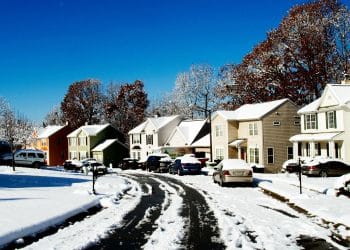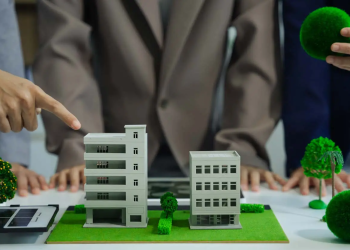Table of Contents
Over time, floods have remained the most frequent natural disaster causing extensive water damage to your home and other structures. However, this is understandable, considering that there has been a continuous surge in rainfall over the last three decades, according to figures from the National Climate Assessment.
That said, homeowners should prepare in advance by focusing on making their landscapes resilient to extreme floods. The following landscaping solutions can reduce the impact of extreme floods on your structures.
1. Making a Drainage Swale
While it might be a new term for most homeowners, a drainage swale simply describes a trench or depression that directs water away created at the base or end of a slope. These best suit backyards with high and low points. If your garden has high and low areas, the chances are that water will gather at the end of the slope, creating a small water body. However, you can avoid basement flooding and frequent water damage repair by creating a drainage swale.
Follow the following steps to create a drainage swale;
- Confirm that creating a drainage swale is permitted in your area. Before you start digging the drain, consult with your state and county offices to ensure that redirecting water isn’t illegal in your area.
- Identify the best position – if you have been granted permission, the next step is identifying the best place for the swale. As mentioned, it is best if placed at the lowest place in your yard. You should consider the location of nearby waterways, such as a creek, pond, ditch, or storm sewer, when choosing the position. If these waterways aren’t close, you can direct water far away from your home to an area that won’t be affected much by excessive periodic groundwater.
- Check the presence of underground utilities – before charting the path of the swale, confirm with the local authorities that no utility lines pass through the location.
- Identify the route and width of the swale – the drain should pass through every boggiest part of your yard to remove any stagnant water. You can determine the width based on the average amount of rainfall in your locality. Generally, a one-foot wide drain is sufficient. With the route and width identified, mark the path and width of the swale along your yard. You can pound stakes or spray the path with paint.
- Dig the swale trench – since lower grounds have constant contact with water, digging a swale trench shouldn’t be challenging. Use a trencher or a shovel to dig between 6 and 8-feet “V-shaped” trench. Smoothen and compress both sides and the bottom.
- Replace the grass – to return the aesthetic appearance of your yard; you should consider replacing the removed sod into the trench. Ensure that the roots touch the soil and water it immediately.
Note that some soil types, specifically clay, do not support the creation of drain swales due to their porous nature. Therefore, if your backyard soil has a lot of clay, you may have to install perforated pipes with gravel to allow easy water movement on the swale.
2. Create a Rain Garden
If creating a swale in your area is illegal, or there is no perfect place to divert rainwater accumulating in your property, your best bet is to create a rain garden. As the name suggests, a rain garden is a designated area, typically with low elevation, full of water-loving plants. Directing water towards an environment full of plants that thrive in water reduces the impact of water on your property.
Follow these steps to create a rain garden;
- Identify the location – like swales, the lowest area in your garden is perfect for a rain garden. It should also be distant from your home and other valuable properties.
- Make a swale leading to the rain garden – use the steps mentioned above to create a drainage swale that directs water to the identified location. You can enhance water movement by using PVC pipes or filing the swale with river rocks.
- Fill the area with growing matter – add growing matter into the garden. A good growing matter should include 30% sand, 40% topsoil, and 30% organic matter. This will support plant growth while improving drainage.
- Introduce water plants to the garden – choose different plants for the center and perimeter of the garden. Plants with high moisture requirements, such as foxglove, native grasses, sedges, and Liatris, are best for the center, while you can plant those with average moisture requirements, such as daylilies, sage, lavender, and coneflowers, at the side.
- Finish the garden edges – for an aesthetic appearance; you can finish the edge of your rain garden using landscaping stones to control the growing plants and define boundaries.
Conclusion
Floods can lead to costly damages to your home. They not only affect the structural integrity of your house but also promote mold growth and other health hazards. Therefore, besides taking various steps to prevent flooding at your home, you should take proactive landscaping measures to prevent water damage as well. If you are affected by water damage, consult water damage restoration experts for immediate remediation.








